(Click on any image for a larger view.)
CAFO (Confined Animal Feeding Operation) Versus Pastured Beef
Over the last 70 years, the beef industry has changed considerably, evolving into an intense, industrial enterprise designed to put as much weight on as many cattle as fast as possible and get the resulting meat to market as quickly as possible.
Consideration for the animals and the consumers has been overtaken by the drive for profit. In response to the damaging impact of feedlot production, more and more farmers and ranchers are choosing to return to – and improve upon – traditional methods of raising cattle on grass.
Grass-farming or raising cattle on a natural diet consisting of fresh grasses, legumes, and other plants and allowing them to roam about is clearly healthier and more humane for the animals.
At the same time, meat from those healthier animals is free of antibiotics, steroids, hormones, pesticides, herbicides and other potentially toxic substances.
Studies have shown that the animal’s diet can have an impact on the nutritional content of the meat on the consumer’s table. Grass-fed meat has been shown to contain less fat, more beneficial fatty acids, and more vitamins and be a good source of CLA.
Whether driven by the urge for better quality food or the need to protect the environment, there is a movement toward a healthier and more ecologically sound way to raise beef.
Instead of trying to incorporate methods of industrial “efficiency” to maximize the number of pounds added to the maximum number of cattle in the shortest possible time, the new approach concentrates on growing healthy cattle over a reasonable amount of time by renewing and restoring the best natural mix of grass and forbs as feed.
To demonstrate this more sustainable practice, we take a look at C-5 Organics/Moose Hill Farm, in Belgrade, Montana, just outside Bozeman. Brian Goldhahn raises organic, grass-fed beef in west central Montana.
Good Grass Makes Good Beef
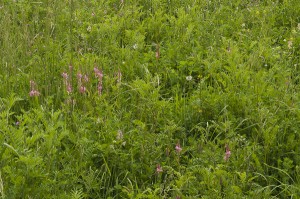 Spread out across 1200 acres of productive clay soils in Gallatin Valley bordered by the Bridger Mountains, C-5 Organics produces plump organic, grass-fed “lowline” Angus beef cattle.
Spread out across 1200 acres of productive clay soils in Gallatin Valley bordered by the Bridger Mountains, C-5 Organics produces plump organic, grass-fed “lowline” Angus beef cattle.
Goldhahn, ranch manager and owner of C-5 Organics, will tell you right out, “I don’t raise beef cattle, I manage a pasture and raise grass. Good grass makes good beef.” The assortment of grasses, legumes, and other plants Goldhahn raises looks like a cow’s idea of a gourmet salad bar.
By finishing his cattle that are ready for market on fields of especially sweet grass, C-5 grass-fed beef has just the right amount of fat and marbling to give it excellent flavor.
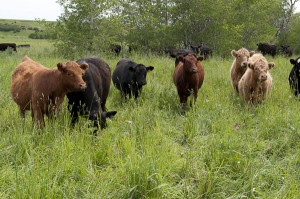 His plant list includes: orchardgrass, fescue, smooth brome, garrison creeping foxtail, Bozosky wild rye, Canada wild rye, regar brome, green needlegrass, slender wheatgrass, bluebunch wheatgrass, crested wheatgrass, prairie Junegrass, Kentucky bluegrass, and Idaho fescue.
His plant list includes: orchardgrass, fescue, smooth brome, garrison creeping foxtail, Bozosky wild rye, Canada wild rye, regar brome, green needlegrass, slender wheatgrass, bluebunch wheatgrass, crested wheatgrass, prairie Junegrass, Kentucky bluegrass, and Idaho fescue.
Combined with the grasses are legumes including: sainfoin, birdsfoot trefoil, red clover, purple clover, ladino clover, sweet clover, and alfalfa.
Practicing intensive rotational grazing, Goldhahn moves 70 to 90 animals through paddocks of 5-7 acres each. Keeping the grazing intensive and moving the cattle often helps control weeds and improve soil fertility with the natural application of manure.
Planned intensive grazing is not only a good way to manage both the cattle and the pasture; it is also a good way to manage a ranch. Portable electric fences allow Goldhahn to run several hundred head of cattle on a moderate sized ranch with minimal assistance.

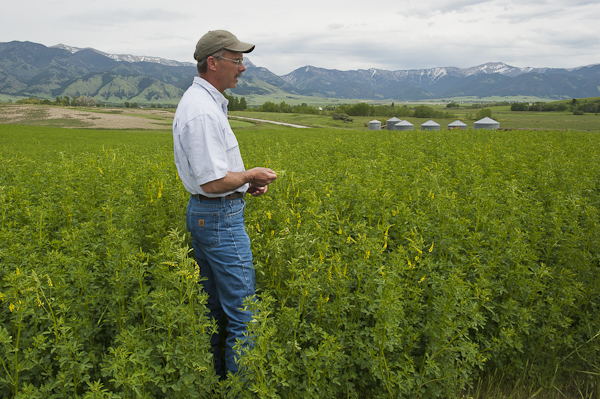
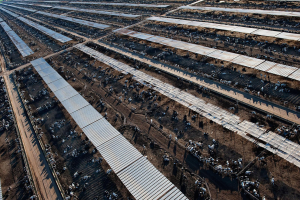
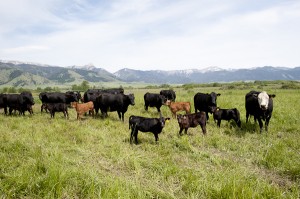
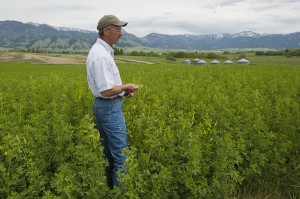
The same is true with nomadic tribes of India and is good for cattle, sheep & goat, camel and Horses/ranch.
Desai.
Dr. Desai,
We should always feed ruminants and other herbivores like horses plenty of grasses and other forbs.
Too bad so many people seem to think that a grain-based diet is better.
All the best!
Gail N-K
Co-Publisher
GoodFood World